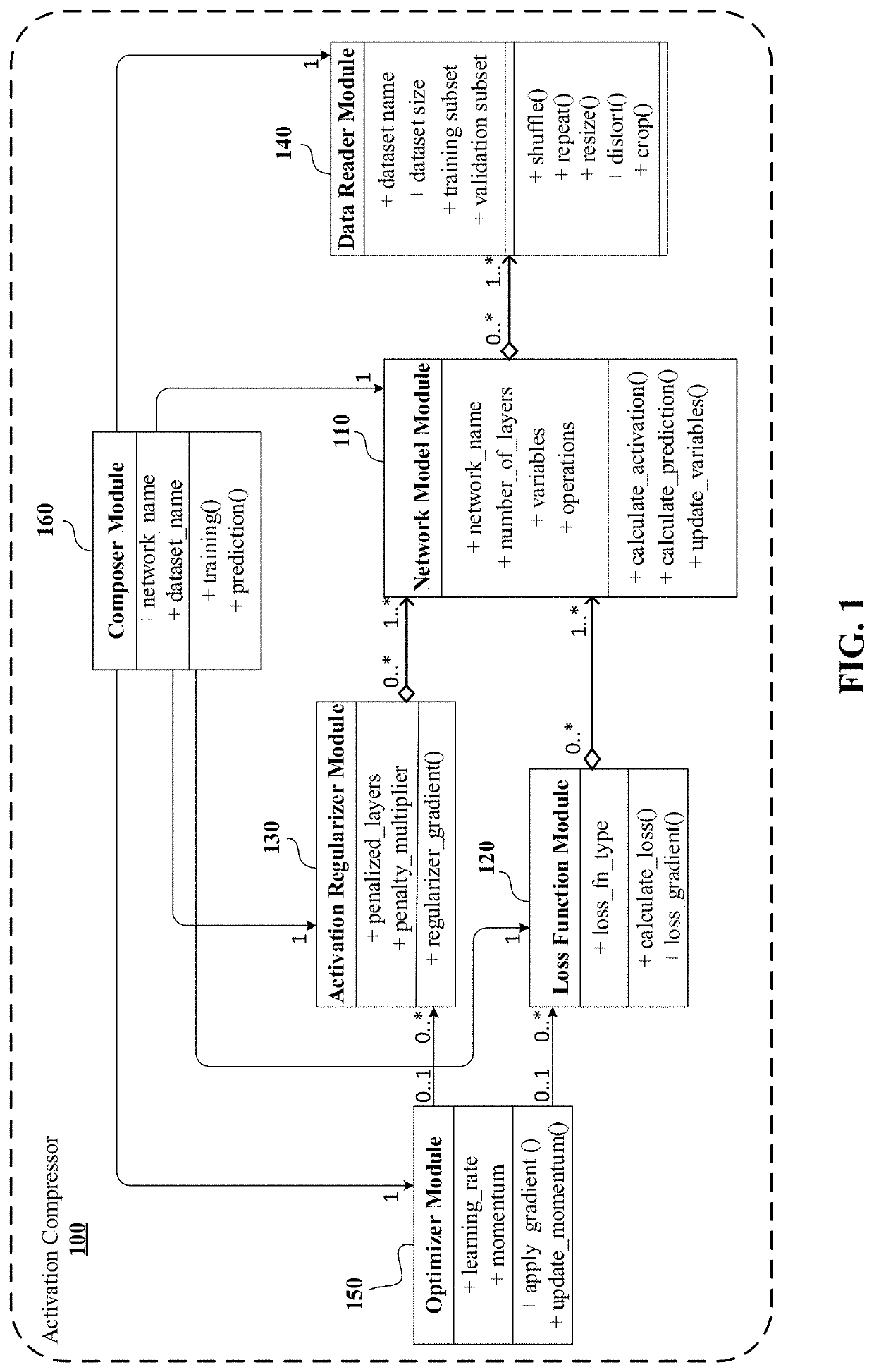Neural network acceleration and embedding compression systems and methods with activation sparsification
a neural network and sparsification technology, applied in the field of artificial intelligence, can solve the problems of large storage cost, deterring the placement of model parameters, and high computational cost of dnn, so as to reduce the number of operations required, and discourage the activation of neurons
- Summary
- Abstract
- Description
- Claims
- Application Information
AI Technical Summary
Benefits of technology
Problems solved by technology
Method used
Image
Examples
first embodiment
[0029]An example of the activation regularizer 130 is Σl=1j-1ρl∥X(j)∥1, where {ρl}j=1j-1 represents the tuning hyperparameters and ∥X∥1 (summation of all absolute values of X) is a convex surrogate function of X that approximately measures how many non-zero components are in X. Note X(j) is a function of parameters associated all layers before layer j (i.e. {W(j′)l}j′≤j).
second embodiment
[0030]the activation regularizer 130 is used together with activation functions having parameters that control the sparsity level of activation. One example of such activation function is represented as follows
[αr(X)]k:={vec(X)k,k∈topr(vec(X))0,o.w.Eq.(2)
which preserves only values of the top-r elements with largest values and suppresses the remaining to be zeros. This special type of activation function is used to replace other activation functions used in a DNN layer X(j):=σW(j)(X(j-1)). Since the activation function Eq. (2) is not Lipschitz-continuous, in practice we employ a smoothed version of the function of the following form
αr(X):=vec(X)∘projCr(vec(X)) Eq. (3)
where the symbol ∘ denotes Hadamard (element-wise) product and the term projCr(⋅) denotes projection onto the convex set Cr:={q|0≤qi≤1,Σiqi≤r}. In this example, the symbol “r” denotes the control parameter that controls the sparsity level of α0r(X). Then a simple example of the activation regularizer 130 is Σl=1j-1ρlrl...
PUM
 Login to View More
Login to View More Abstract
Description
Claims
Application Information
 Login to View More
Login to View More - R&D
- Intellectual Property
- Life Sciences
- Materials
- Tech Scout
- Unparalleled Data Quality
- Higher Quality Content
- 60% Fewer Hallucinations
Browse by: Latest US Patents, China's latest patents, Technical Efficacy Thesaurus, Application Domain, Technology Topic, Popular Technical Reports.
© 2025 PatSnap. All rights reserved.Legal|Privacy policy|Modern Slavery Act Transparency Statement|Sitemap|About US| Contact US: help@patsnap.com



